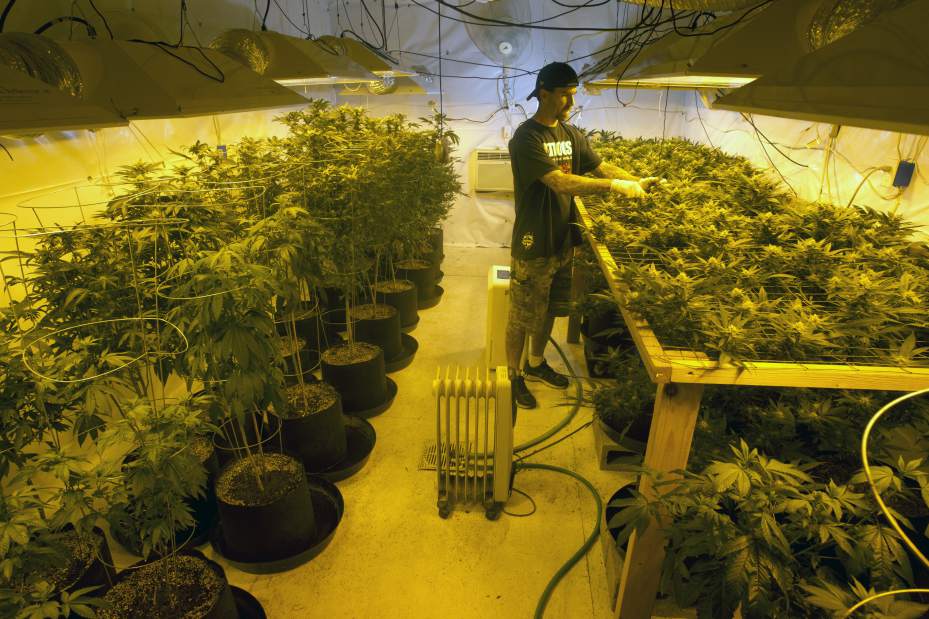Log In To Your Account
Log In With Facebook
Cannabis plants reproduce sexually. That means one plant produces pollen while a second produces seeds. The pollen producing plant is known as a male and the seed-bearing plant is called the female. Cannabis growers cultivate the flowers of the female plant while male plants are used exclusively for breeding.
Growers can also cut a piece off of a plant and cause the clipping to root. This new generation of plant is known as a clone. The cloning process ensures the new plant is a copy of the original plant. Over several generations of cloning, the potency of the cannabis minimizes.
Many producers limit the number of clone generations between growing from seed. This is to ensure that the end product remains consistent. Producers looking to create new strains or splice existing ones enter the realm of cannabis breeding.
When two plants breed, the offspring has to pick and choose which gene it will use in any given place. Genetics are a deep and complex field that shows how simple life really is. Cannabis genes are comprised of the same four structures as every other living thing, including humans. The process of producing functional RNA or protein molecules is called gene expression.
Genes acquire mutations in their sequence, leading to different expressed variants which are known as alleles. These alleles encode slightly different versions of a protein than other members of the species which causes different phenotypical traits. Gene phenotypes 'express' in one of three ways.
Genetic expression can be dominant (dom), submissive (sub) or mixed (hybrid). Breeders refer to plants as being indica or sativa dominant to describe the different method the plant grows. Sativa plants are typically tall, thin and produce a mentally stimulating high. Indica plants tend to be short, broad and produce a physically relaxing high.
Cannabis breeders mate specific genetic expressions (called phenotypes) to produce new varieties of cannabis called strains. Breeders developed strains like Harley Tsu and ACDC over several generations by cross-breeding several strains. They chose plants specifically for .jpg) their high cancer and seizure controlling CBD production until they got the right mix.
their high cancer and seizure controlling CBD production until they got the right mix.
Seeds are the best method to find new expressions of cannabis. Every generation offers a chance for genetic mutations and other variations never expressed before. Even genetically stable strains can develop mutations between generations, although it happens relatively rarely.
Normal seeds have about a 50/50 chance of growing up to be a male or female. Unfortunately, there is no way to tell the gender of a seed until after it is germinated. Breeders can feminize seeds so they only produce female plants but the process is long and tedious.
Instead of mixing genetics every generation, many cultivators prefer cloning. Clones are created by cutting the tip of a cannabis branch off. If the tip is placed in a sugary compound and given enough water, it will grow roots.
The new clone is genetically identical to the parent and a mature plant can produce thousands of clones every month. Plants used to make clones in this way are known as 'mother' plants. The mother is kept in her vegetative state while each generation of daughters grow to flower.
Using a mother plant makes growing hundreds or thousands at a time much easier. It also takes slightly less time for a clone to reach maturity than a seed. Seeds take an average of 4-6 weeks longer to grow than clones so many commercial growers prefer clones.
In a commercial setting, every extra day in the process equates to lost income. Using clones ensures a consistent, fast growing and bountiful crop every time. Clones make up for their accelerated growth by being more susceptible to fungus, mold and disease.
Five days prior to a mother plant being cloned, feed her a potassium heavy nutrient mixture. Mild flowering nutrient mixes are perfect for this. This ensures the mother develops higher levels of potassium in the tips of the plant. It also increases the stability and rooting time of the cutting. Clones can be taken from all parts of the plant with no difference in performance.
 To begin the cloning process, prepare a tray of inert cloning plugs by soaking them in a willow water solution at a PH of 5.8. Once the plugs are thoroughly soaked growers can begin taking cuttings from the mother. Taking 4" to 5" cuttings and stripping all nodes from cutting except for the top three produces the best results.
To begin the cloning process, prepare a tray of inert cloning plugs by soaking them in a willow water solution at a PH of 5.8. Once the plugs are thoroughly soaked growers can begin taking cuttings from the mother. Taking 4" to 5" cuttings and stripping all nodes from cutting except for the top three produces the best results.
After the plugs soak in the willow water solution for about five minutes, insert the cutting into the plugs. Once the roots develop, the plant is ready to transfer to another grow medium. It takes an average of 6 to 10 days to develop enough roots for a clone to be transplanted safely.

An adventure seeking nerd, nothing too serious but people seem to like him, Adam is also the creator and writer for The Strain Domain